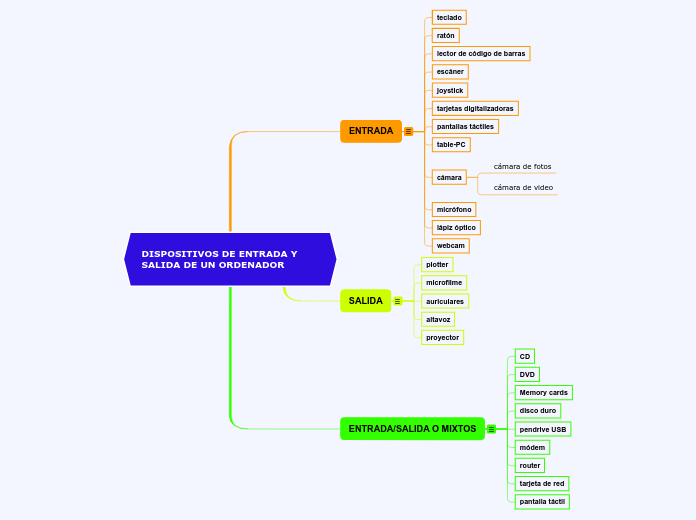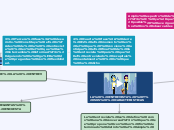DISPOSITIVOS DE ENTRADA Y SALIDA DE UN ORDENADOR
The part of speech is a category to which a word is assigned according to its syntactic functions. In English the main parts of speech are noun, pronoun, adjective, determiner, verb, adverb, preposition, conjunction, and interjection.
ENTRADA/SALIDA O MIXTOS
Los dispositivos de entrada y salida pueden obtener información del equipo o introducirla al equipo. Se denominan también mixtos
A pronoun is a word that can be used in place of a noun, typically after the noun itself has already been stated.
pantalla táctil
tarjeta de red
Unlike demonstrative pronouns, which point out specific items, indefinite pronouns are used for non-specific things. This is the largest group of pronouns. All, some, any, several, anyone, nobody, each, both, few, either, none, one, and no one are the most common.
router
Relative pronouns are used to add more information to a sentence. Which, that, who (including whom and whose), and where are all relative pronouns.
módem
Interrogative pronouns are used in questions. Although they are classified as pronouns, it is not easy to see how they replace nouns. Who, which, what, where, and how are all interrogative pronouns.
pendrive USB
Reciprocal pronouns are used for actions or feelings that are reciprocated. The reciprocal pronouns are each other and one another.
disco duro
A reflexive pronoun ends with ...self or ...selves and refers to another noun or pronoun in the sentence (usually the subject of the sentence). The reflexive pronouns are myself, yourself, herself, himself, itself, ourselves, yourselves, and themselves.
Memory cards
Demonstrative pronouns are used to demonstrate (or indicate). This, that, these, and those are all demonstrative pronouns.
DVD
Possessive pronouns are used to show possession. The possessive pronouns are mine, yours, his, hers, ours, and theirs.
CD
The personal pronouns are I, you, he, she, it, we, they. More often than not (but certainly not always), they replace nouns representing people.
SALIDA
Los dispositivos de salida son aquellos mediante los que obtienes información desde el equipo.
An adjective is a word that's used to describe a specific noun and to provide more detail to the listener.
proyector
altavoz
auriculares
microfilme
plotter
ENTRADA
Los dispositivos de entrada son aquellos mediante los cuales introduces información en el equipo.
A verb is an action word or 'doing' word that signifies movement in some way.
webcam
lápiz óptico
micrófono
cámara
cámara de video
cámara de fotos
table-PC
pantallas táctiles
tarjetas digitalizadoras
joystick
escáner
An auxiliary verb helps the main (full) verb and is also called a 'helping verb.' With auxiliary verbs, you can write sentences in different tenses, moods, or voices.
lector de código de barras
A participle is a verb form that can be used as an adjective or to create a verb tense. There are two types of participles: Present participle (ending -ing) and Past participle (usually ending -ed, -d, -t, -en, or -n).
ratón
A modal is a type of auxiliary (helping) verb that is used to express: ability, possibility, permission or obligation. The main modal verbs in the English language are: can, could, may, might, must, shall, should, will, would.
teclado
A linking verb connects the subject with a word that gives information about the subject, such as a condition or relationship.









